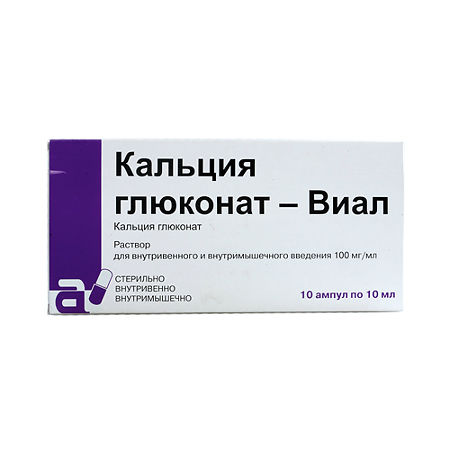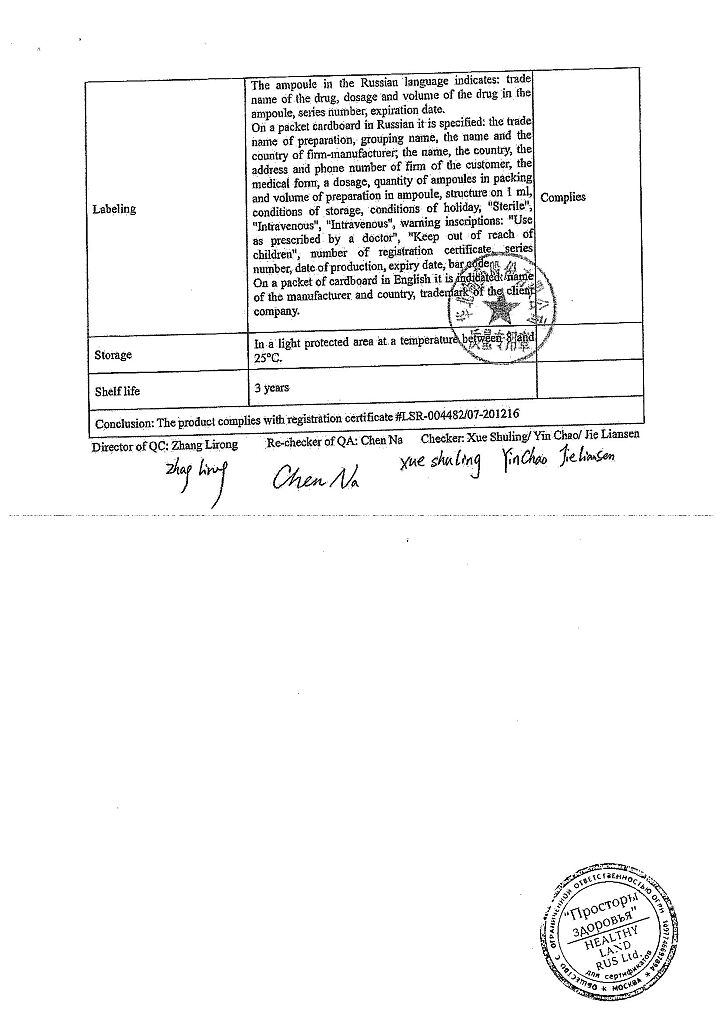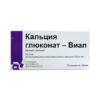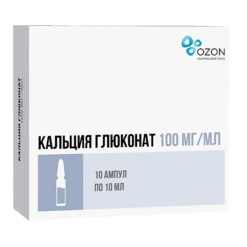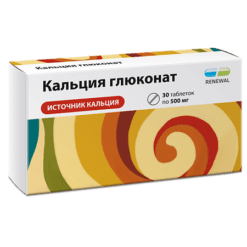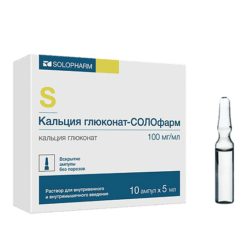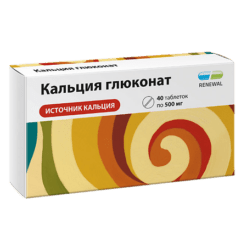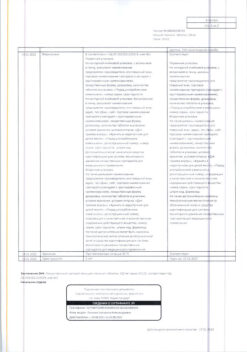No products in the cart.
Calcium gluconate, 10 mg/ml 10 pcs
€1.00
Out of stock
(E-mail when Stock is available)
Description
Pharmacodynamics
Calcium ions are involved in transmission of nerve impulses, contraction of smooth and transverse striated muscles, myocardial function, blood clotting; they are necessary for bone formation, functioning of other systems and organs.
The concentration of calcium ions in the blood decreases in many pathological processes; severe hypocalcemia contributes to tetany.
In addition to elimination of hypocalcaemia, calcium compounds reduce vascular permeability and have anti-allergic, anti-inflammatory, haemostatic effect.
Pharmacokinetics
After parenteral administration the drug is evenly distributed in all tissues and organs.
In blood plasma calcium is in ionized state.
Passes the placental barrier and is excreted in breast milk.
Extracted from the body, mainly by the kidneys.
Indications
Indications
Active ingredient
Active ingredient
Composition
Composition
1 ml of solution for injection contains:
acting substance:
calcium gluconate 10 mg
How to take, the dosage
How to take, the dosage
Intravenously or intramuscularly, adults and children over 14 years of age are administered 5-10 ml of Calcium gluconate daily, every other day or every two days, depending on the nature of the disease and the patient’s condition.
The ampoule with the solution is heated to body temperature before injection. The solution is administered slowly, for 2-3 minutes.
In children, depending on their age, 10 % solution of calcium gluconate is administered intravenously in the following doses: up to 6 months of age – 0.1-1 ml, 6-12 months – 1-1.5 ml, 1-3 years – 1.5-2 ml, 4-6 years – 2-2.5 ml, 7-14 years – 3-5 ml.
In order to administer a solution in an amount less than 1 ml a single dose is adjusted to the appropriate volume (syringe volume) with 0.9% isotonic sodium chloride solution or 5% glucose solution.
Interaction
Interaction
Calcium gluconate eliminates inhibition of neuromuscular transmission after the use of antibiotics of aminoglycosides series. When used together with thiazide diuretics leads to the development of hypercalcemia.
Parenteral administration of the drug during treatment with cardiac glycosides promotes enhancement of cardiotoxic effects of cardiac glycosides. When concomitant use with phenygidine, calcium preparations weaken its effect. Calcium preparations increase the toxicity of quinidine.
Thiazide diuretics decrease urinary calcium excretion, which increases the risk of hypercalcemia.
Calcium preparations are contraindicated in patients receiving cardiac glycosides. Calcium preparations may decrease absorption of tetracycline preparations in gastrointestinal tract, due to this the interval between intakes of these preparations should be not less than 3 hours.
Special Instructions
Special Instructions
Patients with hypercalciuria, decreased glomerular filtration or a history of nephrourolithiasis should prescribe the drug with caution and under control of urinary calcium content.
To reduce the risk of nephrourolithiasis, adequate fluid intake is recommended.
Before filling the syringe with calcium gluconate solution, make sure there is no residual ethyl alcohol in the syringe, because calcium gluconate precipitates because of their interaction.
The ability to affect reaction speed when driving or operating other machinery. There are no references to the fact that Calcium gluconate may affect the speed of psychomotor reactions.
Calcium preparations should be prescribed with caution in patients with heart disease or sarcoidosis. Careful monitoring of blood calcium levels and urinary calcium excretion is necessary when high doses are prescribed, especially in children.
Treatment should be stopped if blood calcium levels exceed 2.625 to 2.75 mmol/L or if urinary calcium excretion exceeds 5 mg/kg. High vitamin D intake should be avoided during calcium therapy.
Patients with mild hypercalciuria, decreased glomerular filtration or a history of nephrolithiasis should be prescribed with caution and under monitoring of urinary calcium content. To reduce the risk of nephrolithiasis, plenty of drinking is recommended.
Contraindications
Contraindications
Side effects
Side effects
Sometimes there may be nausea, vomiting, diarrhea, bradycardia, a feeling of heat in the mouth and later in the whole body, which quickly pass on their own.
Overdose
Overdose
Symptoms: Possible development of hypercalcemia.
Treatment: As an antidote calcitonin is used, which is administered intravenously at the rate of 5-10 IU per 1 kg of body weight per day (the drug is diluted in 500 ml of 0.9% sodium chloride solution, injected by drip for 6 hours in 2-4 applications).
Pregnancy use
Pregnancy use
In pregnant women taking calcium preparations together with vitamin D, the probability of hypercalcemia increases.
In recommended doses taking calcium preparations does not cause any negative effect on the fetus, it is safe to use even during breast-feeding.
Similarities
Similarities
Additional information
| Shelf life | 5 years |
|---|---|
| Conditions of storage | In a place protected from moisture, at a temperature not exceeding 25ºC. |
| Manufacturer | Vial, Russia |
| Medication form | solution |
| Brand | Vial |
Other forms…
Related products
Buy Calcium gluconate, 10 mg/ml 10 pcs with delivery to USA, UK, Europe and over 120 other countries.

